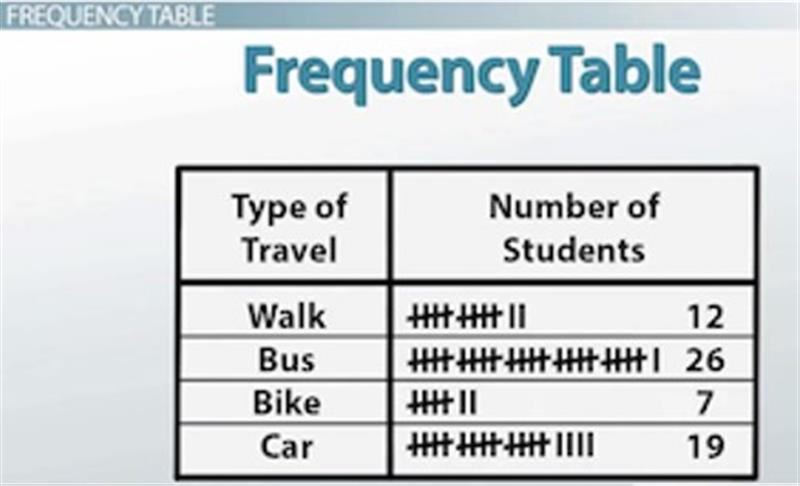Statistics Are on the Rise
When you decide to move to a new home, whether it is in the same city or across the country, one of the first things that you might do is look at the crime statistics for that area. Are they on the rise, or are they declining? You might also look at the schools. How do they stack up against other schools? Are their scores on the way down, or are they rising year after year?
All of this information, and information on almost any topic you can think of, can be found using statistics. Statistics is the study of the collection and analysis of data.
Relative and Cumulative Frequency
In mathematics, frequency refers to the number of times a particular event occurs. There are two types of frequency: relative and cumulative. Cumulative frequency is the total number of times a specific event occurs within the time frame given. Relative frequency is the number of times a specific event occurs divided by the total number of events that occur. Let's use an example:
Your soccer team ended the season with a record of 15 wins and 3 losses. The cumulative frequency of your wins is 15 because that event occurred 15 times. The relative frequency of wins is 15 divided by 18, or 83%, because, out of the 18 total games (or events), your team won 15.
Relative frequency is a good way to predict how often an event might occur in the future. If you know that your soccer team has won 83% of the time in the past, you can reasonably assume that you will win 83% of the time in the future.
Frequency Table
One of the best ways to tally and organize frequency data is to use a frequency table. A frequency table is a table that lists items and shows the number of times they occur. Below you see an example of a frequency table that describes the different ways students travel to get to school. You can also include a column that gives the relative frequency of each event.

Example of a frequency table
Percent Increase
Let's go back to our example of moving to a new town for a minute. If you were to read that the area you wanted to move to had a 2% increase in crime in the last year, you might think twice about moving there. At the very least, you would do some extra research.
What if you discovered in your additional research that the test scores at the local elementary school increased by 23% in the last year? That statistic might be more important to you than the small increase in crime in the same area. The percent increase represents the relative change between the old value and the new value. In order to calculate the percent increase, you must have collected data about the same event, just at a different time.